How to Optimize Your Product Pages for Better Rankings

When it comes to finding e-commerce success, your product pages are the lifeblood of your store. They’re where customers make buying decisions, and where search engines decide whether your products should be displayed to potential buyers. Getting these pages right can bring in traffic, but could also increase your conversions, so every little bit of effort here builds up.
This guide will teach you actionable ways to optimize your product pages for better rankings, improved user experience and, in the long run, more sales. From writing E-commerce product descriptions that are SEO-friendly, to better image alt text, you’re about to learn tips that will make your e-commerce website glimmer.
Understanding Product Page Optimization for SEO
What is Product Page Optimization?
Product page optimization is the activity of optimizing multiple aspects on a product page to better it’s visibility on the search engines and enhance the user experience of the product page. Well-optimized product pages are key to driving organic traffic and turning browsers into buyers.
Why is Product Page Optimization Crucial?
If your product pages are not optimized, you are literally pushing money down the drain and reducing your chance to rank higher on search results pages where people can actually find you and then buy from you. The research shows that 75% of searches never scroll beyond the first page of results. In other words, unless your product pages are optimized, they might as well be invisible to most online shoppers.
And optimization will involve good titles, meta tags, and all the other good things. By making sure each element of your product page works together can result in a massive lift in rankings and revenue.
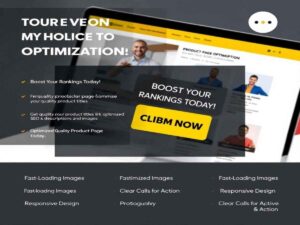
Crafting SEO-Friendly Product Descriptions
Importance of Unique Product Descriptions
Your SEO will suffer due to generic or duplicated product descriptions. Search engines love original and engaging content – if your product’s description is just a copy-and-paste from the manufacturer, chances are it’s being penalized. Even worse, customers won’t buy from you if your copy does not speak directly to what they need.
Best Practices for Writing Product Descriptions
- Employ strategic words: weave the keywords into your copy naturally. For instance, if you sell yoga mats, use terms such as “durable non-slip yoga mat” or “best yoga mat for beginners.”
- Focus on Customer Pain Points: Don’t simply recite a feature list; highlight how your product meets needs. For instance, “Crafted from sweat-resistive material, our yoga mat ensure you stay comfortable during your hardcore workouts.
- Get Your Audience Talking: It’s easy – because PatPat use Social.Shop customer language in their content. Emphasise a value with a phrases like “perfect for…” or “ideal solution for…”
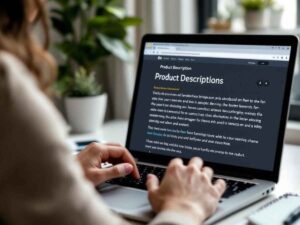
Optimizing Product Titles for SEO
Why Product Titles Matter
Your product title is one of the first things somebody sees on your product page and does two things. Firstly, it enables search engines to understand what your product is. Second, it pulls the eye of prospective buyers scrolling through search results. A nicely optimized title helps your product to be discovered and receive more clicks.
Best Practices for Product Titles
- Be Descriptive: Full titles – Please do not judge submissions (like men’s camo gore-tex hiking boots).
- Add Brand Names: Include a brand name wherever possible to appear in more search results (for example, “Adidas Ultraboost Running Shoes”).
- Include Key Features: Coax key features out of basic information like size, material, or color (example “32oz Stainless Steel Insulated Water Bottle”).
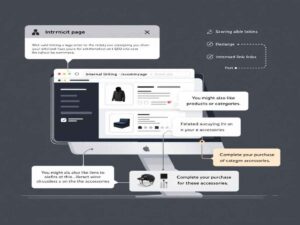
Image Optimization for Product Pages
Why Image Optimization is Critical
Visuals not only engage users right away but they also play a major part in the user’s journey. Still, if you are using unoptimized images on your site, then it could harm your website’s performance and your user experience and your SEO rankings will take a hit.
Best Practices for Image Optimization
- Name Relevantly: Don’t file them as “IMG123. jpg,” it’s a good idea to use descriptive names like “leather-tote-bag. jpg.”
- Resize Images: Reduce the size of images to achieve equilibrium between quality and site load speed. Tools such as TinyPNG or ImageOptim are very useful.
- Insert Alt Text: Use ALT text that describes what’s going on in the image or how it relates to your target keyword. For example, “Women’s black leather bag with gold accents.”
Meta Tags and Metadata for Product Pages
The Role of Meta Tags
The meta title and meta tags are displayed as a preview for both users and search engines. They not only describe what your page is about, but also impacts on CTR and how you rank in the SERPs.
Best Practices for Meta Tags
- Title Tags: Write short, keyword-rich titles containing the product name and an unique selling point.
- Meta Descriptions: Tap into verbs for engaging clicks. For instance, “Find the softest organic cotton tees made for all-day ease.”
Using Schema Markup
Because there are structured data (such as schema markup) that makes how search engines understand your page better. It lets you show snippets of your content like price, rating, and availability in search results.
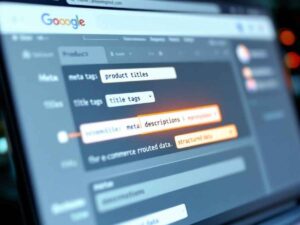
Internal Linking for E-commerce Product Pages
Why Internal Linking is Important
Internal linking is also helpful to steer users toward related products or resources as you spread the link equity from one page to another through your site. This makes for better navigation and SEO.
Best Practices for Internal Linking
- Related Product Linking: Optimize Additional Offers Offer related products with “Complete the Look” type incentives.
- Optimize Your Anchor Text: An example is using “durable camping gear” instead of general terms such as “click here.”
Improving User Experience for Product Pages
Why User Experience Matters
Google prioritizes websites that provide exceptional user experiences, and those efforts often translate into better rankings. A product page that’s a pleasure to browse is more likely to convert.
Best UX Practices for Product Pages
- Intuitive Navigation: Simplify menus so users can find products with ease.
- Responsive Design: Ensure your pages are mobile-friendly.
- Quick Load Times: Optimize every element for speed, including images and scripts.
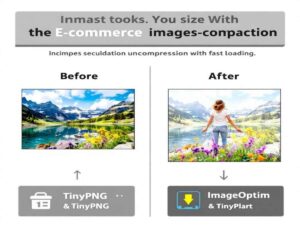
Tracking and Monitoring Product Page Performance
Using SEO Tools
You can employ tools like Google Analytics and Ahrefs to measure the right metrics like rankings, click-through rates, and conversion rates. Periodic review of your product pages will allow you to keep them optimized and competitive.
Continuous Improvement
Optimization isn’t a one-and-done process. Test which works with A/B testing and check on your descriptions, images and tags often.
Start Optimizing Your Product Pages Today
The product page that’s properly optimized is one of your most powerful weapons in your e-commerce arsenal. By creating compelling product description to having a smooth user experience and measuring product page performance, these tips will ensure your product page reaches the top of the search rankings.
If you are ready to improve your online store’s rankings, begin with your product pages now and see your rankings skyrocket! For more personalized assistance, contact us for an SEO consultation, we’re ready to help your e-commerce site look its best.
Frequently Asked Questions (FAQ)
The Importance of Optimizing a Product Page For What Reasons Would You Optimize a Product Page?
A properly optimized product page also means a better user experience, better rankings on search engines, and better conversion. The more attractive the page, the more customers it will attract and the better it will convert traffic into sales.
What are some essential ingredients in a product page that is well-optimized?
Important aspects also include attractive item description, large images, easily recognizable call-to-action buttons, mobility compatibility, and so on. Including the customer reviews and product FAQs helps to build confidence and engages the users.
How product page optimization benefits my e-commerce SEO?
As a result, when you optimize your product page for the right keywords, you have the correct meta descriptions, and great page load speeds, search engines will rank not only the images of the product but the product page higher in the search results. This improves visibility and more visitors come to your webspace organically.
Product page optimization Do I need to hire someone?
Although you will be able to do many optimization techniques by yourself and rely only on your workforce, with professional help you will get personalized strategies, advanced resources and the use of the latest technique to get quickly and effectively impressive results.
How long until I see results after doing page optimization?
Results may be different based on your industry, how competitive you are, how much you change, etc. On average if low-medium competition then you see traffic or conversions after few weeks, It’s daily increasing as your page get attraction.





